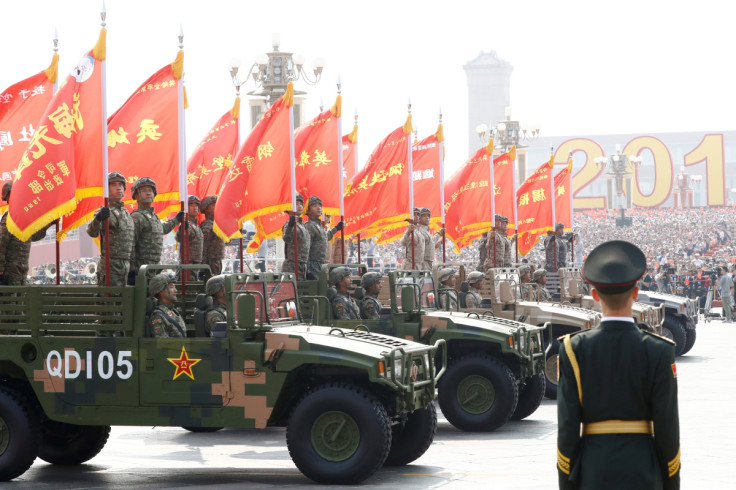China Develops A Tool To Defend Military Facilities In South China Sea, And It's Mind-Blowingly Simple
KEY POINTS
- China has been exploring new ways to protect its military facilities from aerial attacks
- Images surfaced online showed China testing a barge equipped with radar reflectors and antennas
- Russia has employed radar reflector technique in Ukraine
Amid rising tensions in the South China Sea, the People's Liberation Army (PLA) has developed a low-cost fast deployable air defense system using radar reflector balloons to protect military facilities from aerial attacks.
In the era of AI technology, the Chinese military is opting for a rather simplistic method to protect critical infrastructure. The PLA demonstrated its latest technique at a joint drill, called the Zhejiang Golden Shield-22, conducted by the Chinese military and local units in November.
It involved the use of radar reflector balloons to safeguard military facilities in case of a long-range missile or drone attack, according to a report on The War Zone.
1/2🇨🇳Joint PLA & local militia civil Air Defense drills to test protection capabilities of critical infrastructure against loitering munitions/UAVs.
— Jesus Roman (@jesusfroman) November 18, 2022
It included the deployment of AD air balloons on UAVs avenues of approach&energy assets visual camouflage
(Ukraine lesson learnt) pic.twitter.com/m21KrBIVnZ
Fearing a military confrontation in the South China Sea, which Beijing considers an inalienable part of its territory, China is steadily developing air defense and anti-ship weapons.
Amid the rapid modernization of its military, the technique of using balloons may sound too simple and primitive. However, the system could help augment PLA's air defense systems with civilian participation in the event of an attack when more advanced and modern countermeasures are not available immediately.
Hinting at its purpose, Chinese news outlet Zhejiang News said the joint exercise focused on new threats emerging from modern warfare to urban air defense. It reportedly explored "new ways to protect" important targets through civilian air defense preparations and military-civilian joint air defense operations.
Although the use of balloons with radar reflectors may seem unsophisticated, they can conceal the signature of a target object. Radar reflectors can be used to confuse the sensors of incoming radar-guided missiles or aircraft.
Significantly, a set of images that surfaced on social media in August showed a Chinese barge equipped with radar reflectors and antennas.
Interesting Chinese naval equipment for testing. pic.twitter.com/4HorbLUOCU
— Ryan Chan 陳家翹 (@ryankakiuchan) September 22, 2022
Open-source intelligence reports suggested the barge looked similar to Russia's Project 436 target barges deployed near the Kerch Strait Bridge that connects Russia with Crimea. They were similarly equipped with a large number of radar reflectors.
A Russian Project 436 target barge equipped with a large number of radar reflectors near the Crimean Bridge.
— OSINTtechnical (@Osinttechnical) August 6, 2022
This is most likely intended to serve as a decoy for any terminal radar guided missiles aimed at the bridge. pic.twitter.com/li60lGGtjv
Russia has widely employed the technique in Ukraine, using radar reflectors at multiple locations, especially around critical infrastructure. They also deployed pyramidal radar reflectors with decoy barges creating "phantom" or "ghost" bridges to divert attacks.
The use of balloons for air defense is also not a new concept. Similar techniques were employed by several European nations during the first and second World Wars. During the wars, floating barrage balloons forced enemy aircraft to fly at higher altitudes, which decreased their attack accuracy while making them targets of air defense guns. The balloons also posed a major risk for aircraft, especially during night sorties. The U.S. had also experimented with balloons carrying radar reflectors of varying sizes during the Cold War.
However, with advances made in defense and combat technology, the use of barrage balloons as a means of air defense became less relevant. But with Beijing investing heavily in developing measures to counter radar-guided missiles and drones, the drill involving radar reflector balloons is unlikely to be a futile exercise.

© Copyright IBTimes 2024. All rights reserved.












